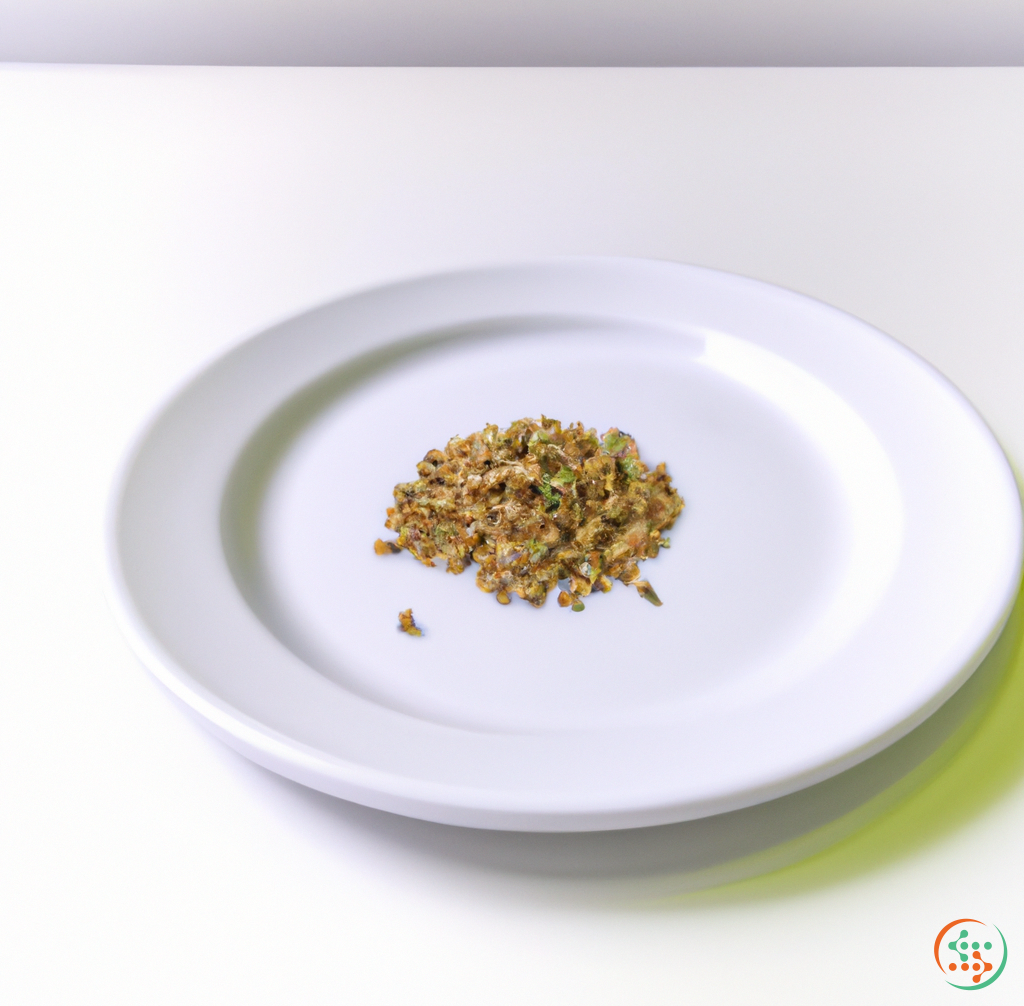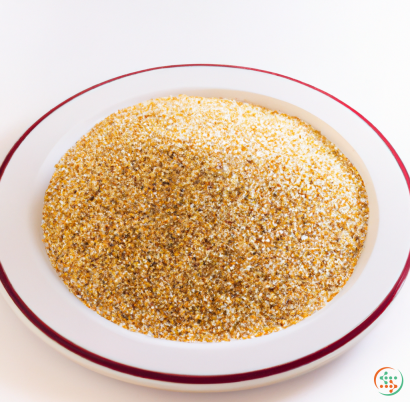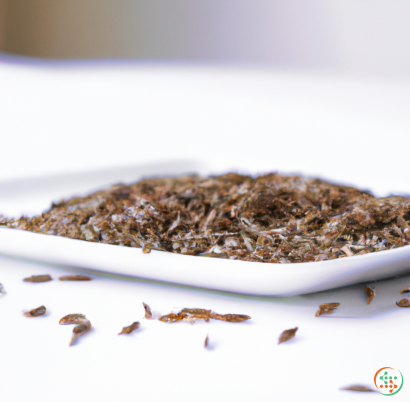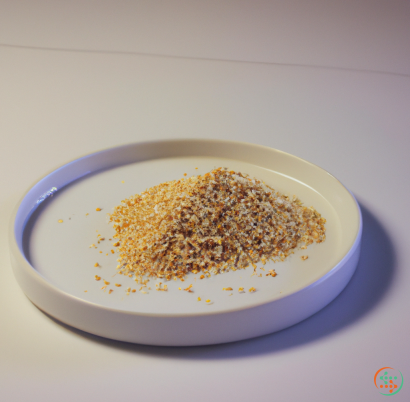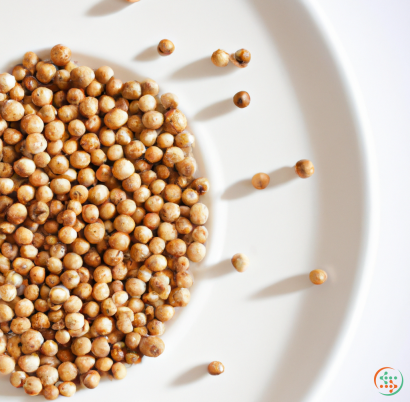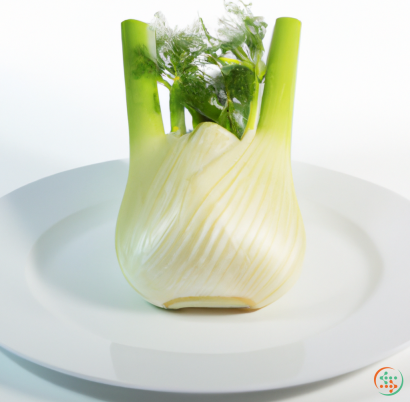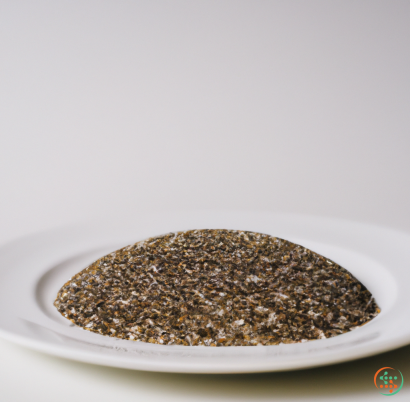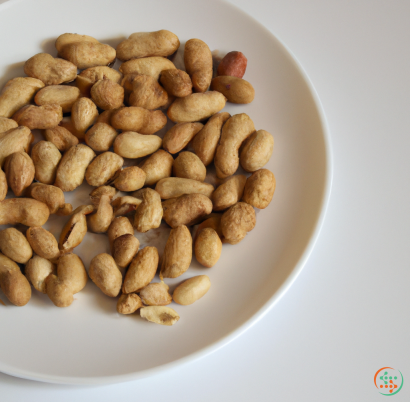Celery Seed
, its benefits and how it can be used in baking
Celery Seed: The Sweet, Tangy, and Flavorful Spice with Countless Benefits
When you think of Celery, the first things that typically come to mind are the vegetable sticks served on the side of a restaurant sandwich tray. But, many people don’t realize that there is much more than meets the eye, in this case, the nose and taste buds, to the family Apiaceae. Celery seed, the fine spice obtained from the herb celery, has been used in many different cuisines throughout history, providing cooks with a unique flavor as well as numerous health benefits. Let’s take a closer look at this amazing seed, its uses, and its many benefits.
What is Celery Seed?
Celery seed is obtained from the still-developing seeds of the various types of plants within the Apiaceae family. Most types of celery seed have a sweet and tangy flavor. They can range in heat from mild to pungent, depending on the variety of the plant and the specific plant’s maturity. Many common grocery store bouquets like parsnips, carrots, radishes, and chard are included in the same family as Celery.
While Celery seed is most commonly known for it’s use in cooking, it’s also used as a health supplement and is available as an extract or as capsules in many health food stores.
What are the Benefits of Celery Seed?
Celery seed has numerous health benefits, which is why it’s been used in traditional medicine for thousands of years. Some of the main benefits include:
1. May Help Lower Blood Pressure: Studies have shown that consuming celery seed extract may help to reduce both systolic and diastolic levels of blood pressure.
2. Anti-Inflammatory Properties: Celery seed contains phytochemicals, which are believed to help reduce inflammation in the body.
3. Aids Digestion: Celery seed contains a natural compound called apiol, which helps to stimulate digestion and reduce gas buildup in the intestines.
4. Rich in Antioxidants: Celery seed is a rich source of antioxidants, which help to protect cells from damage caused by free radical molecules.
5. Hiophytochemical Content: Celery seed is a rich source of phytonutrients, which can help to prevent certain types of cancer, including colon cancer.
How to Use Celery Seed in Baking?
Apart from the numerous health benefits celery seed provides, it’s also a delicious addition to practically any baked goods. The warm aroma and flavor of celery seed make it an ideal choice for adding flavor and texture to breads, muffins, pastries and cookies.
When using celery seed in baked goods, add it early in the baking process. Celery seed tends to lose strength as it bakes and is most prominent when added to the dry ingredients. For the best flavor, mix the seeds in with the dry ingredients before adding the wet ingredients. You can also grind the seeds slightly with a mortar and pestle to bring out the flavor even further.
For a more pronounced flavor, try toasting the seeds before adding them to the dough or batter. Simply spread the seeds on a single layer of parchment paper and bake them in a 350-degree oven for 5-7 minutes. They should turn slightly darker and fragrant when toasted.
Celery seed can also be used in all sorts of savory dishes, such as stews, soups, noodles, curries and sandwiches. The seeds provide a unique flavor that’s sure to please.
Conclusion
Celery seed is a versatile and unique spice that’s been used for centuries. It provides cooks with a unique sweet and tangy flavor, and its many health benefits make it a great addition to any diet. Whether you’re baking a batch of muffins or creating a hearty stew, adding a few teaspoons of celery seed will surely add flavor and boost the nutritional content of your meal.
Celery, an ancient vegetable with a unique bitter-sweet flavor, has been used in cooking for centuries. From high-end restaurants to home-cooked meals, this nutritious veggie can be found around the globe. But how does it get from the seed that grower works hard to cultivate, to the dinner plate that you and your family will eventually enjoy? Let’s take an in-depth look at the journey a single celery seed takes from seedling to dinner plate.
The first step in this process is Celery seed production: what goes into producing a celery seed that is capable of growing into a fully mature plant? Celery seeds are usually produced through hybridization – a patented process of combining two different plants in order to create offspring with desired traits – although modern techniques do not always require this same process. Once the desired hybrid line has been created, then the parent plants are self-pollinated to produce genetically identical seeds. Upon successful completion of this step, the planting of the seeds can begin.
Once the seed is planted, it may take a full week before the seedling emerges. As the seed sprouts, it requires water, oxygen, light and soil nutrients. The soil must be packed tightly enough to support the seed’s growth, while still allowing roots to penetrate and tap into the soil nutrient supply. Along with the right nutrients, a steady supply of water and light is also key. If these things are all in balance, the celery seed will grow rapidly, developing its tiny shoots and leaves over the course of several weeks.
By the time the seedling is ready to be transplanted, it should have developed three sets of its beloved triangular shaped leaves. Growing a single plant from seed is a lengthy process, but when done correctly it should result in a beautiful, healthy plant. The seedling is now ready to take up permanent residence in its new home, whether that home be a garden, greenhouse, or field.
For most outdoor celery plants, this next stage of growth is best done in the spring when the weather is most cooperative. Once the seedling has taken up residence, the grower must ensure the soil temperature and pH level is within the appropriate parameters for Celery growth. The soil must also maintain a consistent moisture level while avoiding salt or nutrient deficiencies. As the seedling continues to grow, it must also be defended from pests and diseases. A careful hand, frequent misting and diligent weed pulling should help ensure a successful season.
Although the time it takes for a Celery plant to reach maturity is subjective, depending on the exact climate and growing conditions, maturity typically ranges from 65 to over 100 days. At this point, the grower must be vigilant with irrigation and harvesting. If the harvest season stretches into the fall and first frost, then the plants need extra TLC to battle off chilly temperatures.
Upon harvesting, the produce must be handled with care so as not to damage anything in the process. Celery roots must be lightly removed and the stalks must not be too heavily bruised. After the harvest, the produce must be inspected for quality assurance before being sorted and sent off to the packaging facility. At the packaging facility, the Celery is washed before each stalk is cut into the traditional sizes, such as sticks or hearts. Depending on the packaging, the Celery is then distributed directly to supermarkets or processed and included among the ingredients found in many prepared foods. Now all that remains between the Celery seed and the dinner plate is the proper storage, handling and cooking.
When stored correctly, Celery can remain fresh for several days, even if cut. For optimal storage conditions, most vegetables, including Celery, should be kept in a cool, dry place. When cooked, it is relatively easy to prepare, especially if you’re looking for a simple side dish or mix-in for a soup, stew or stir fry. From the seed’s creation, to the moment it seals its fate in the form of finely chopped Celery atop a creamy potato salad, our Celery seed has certainly come a long way.
| Vitamin A | 0.003 mg | |
| Beta-Carotene | 0.031 mg | |
| Vitamin E | 0.00107 grams | |
| Vitamin C | 0.0171 grams | |
| Vitamin B1 | 0.34 mg | |
| Vitamin B2 | 0.29 mg | |
| Vitamin B3 | 0.00306 grams | |
| Vitamin B4 | 0.0247 grams | |
| Vitamin B6 | 0.89 mg | |
| Vitamin B9 | 0.01 mg |
| Calcium | 1.767 grams |
Daily Value 1.3 g
|
| Iron | 0.0449 grams |
Daily Value 0.018 g
|
| Magnesium | 0.44 grams |
Daily Value 0.4 g
|
| Phosphorus | 0.547 grams |
Daily Value 1.25 g
|
| Potassium | 1.4 grams |
Daily Value 4.7 g
|
| Sodium | 0.16 grams |
Daily Value 2.3 g
|
| Zinc | 0.00693 grams |
Daily Value 0.011 g
|
| Copper | 0.00137 grams |
Daily Value 0.9 mg
|
| Manganese | 0.00757 grams |
Daily Value 0.0023 g
|
| Selenium | 0.0121 mg |
Daily Value 0.055 mg
|
| Total Sugars | 0.7 grams |
per 100g
|
| Capric acid (10:0) | 0.02 grams |
|
| Lauric acid (12:0) | 0.02 grams |
|
| Myristic acid (14:0) | 0.02 grams |
|
| Palmitic acid (16:0) | 1.29 grams |
|
| Stearic acid (18:0) | 0.39 grams |
|
| Total Saturated fatty acids: | 1.74 g | |
| Oleic acid (18:1) | 15.45 grams |
|
| Palmitoleic acid (16:1) | 0.24 grams |
|
| Gadoleic acid (20:1) | 0.24 grams |
|
| Total Monounsaturated fatty acids: | 15.93 g | |
| Linolenic acid (18:3) | 0.2 grams |
|
| Linoleic acid (18:2) | 3.52 grams |
|
| Total Polyunsaturated fatty acids: | 3.72 g | |
| Phytosterols | 0.06 grams |
|
| Total Sterols: | 0.06 g | |
